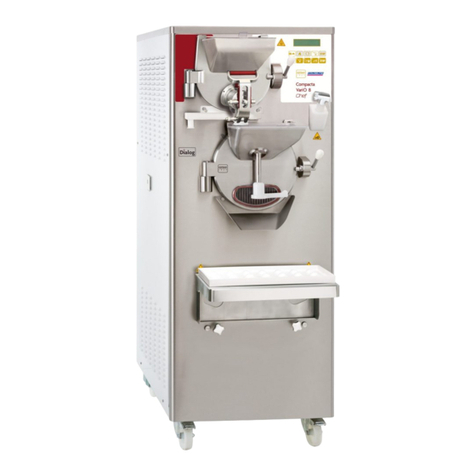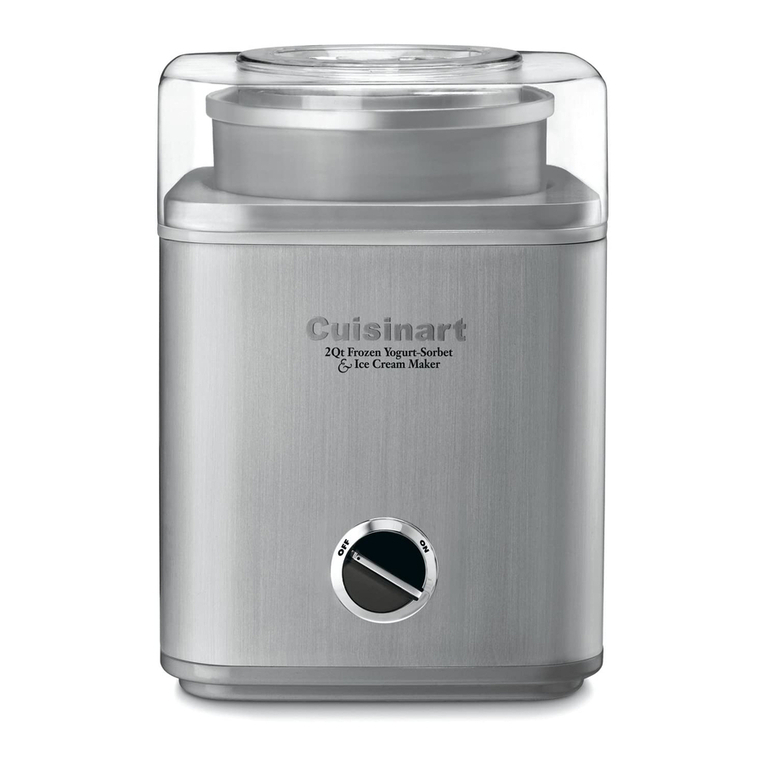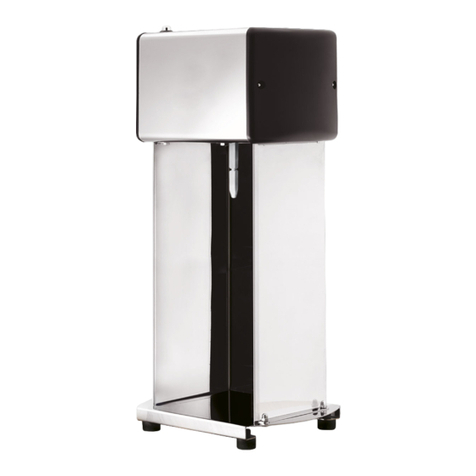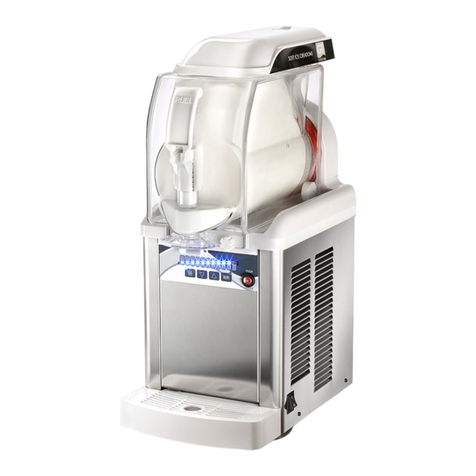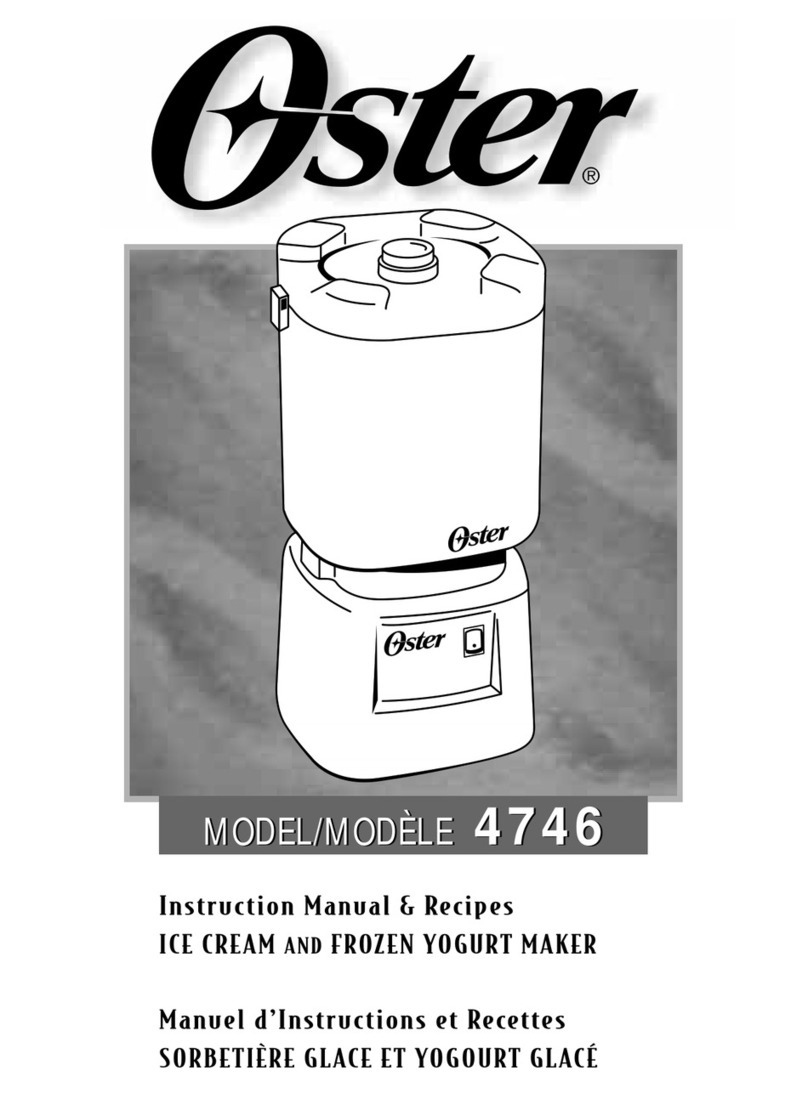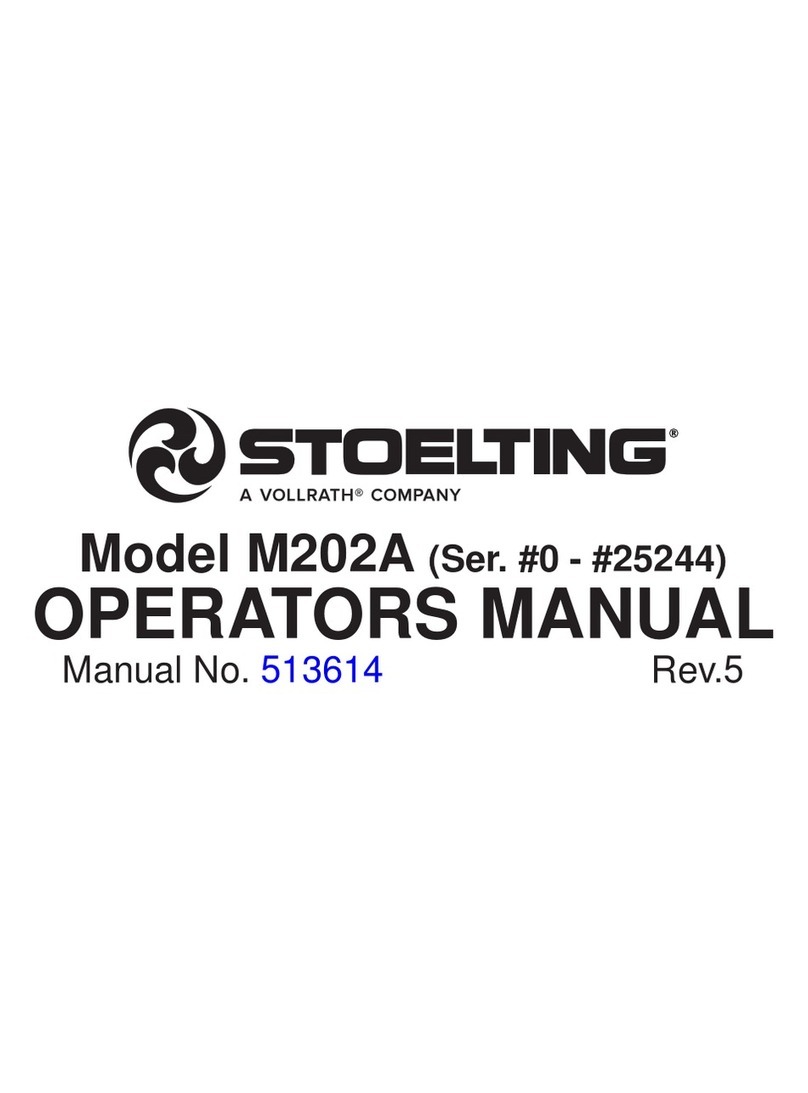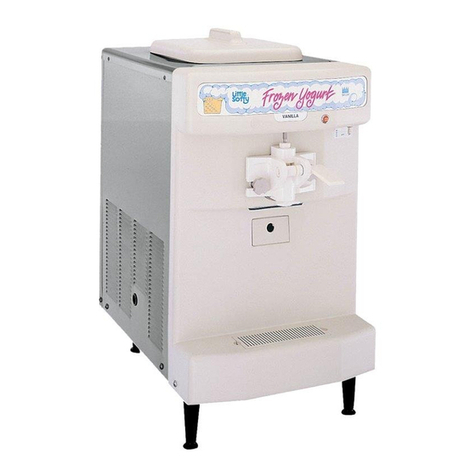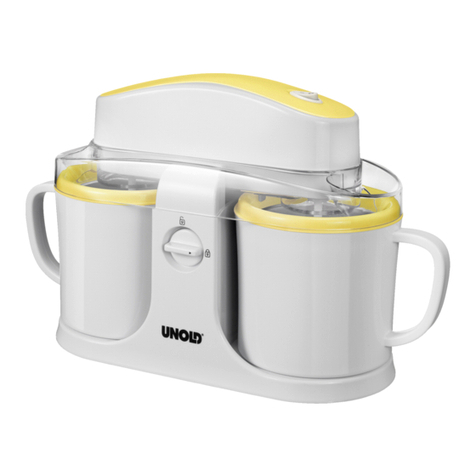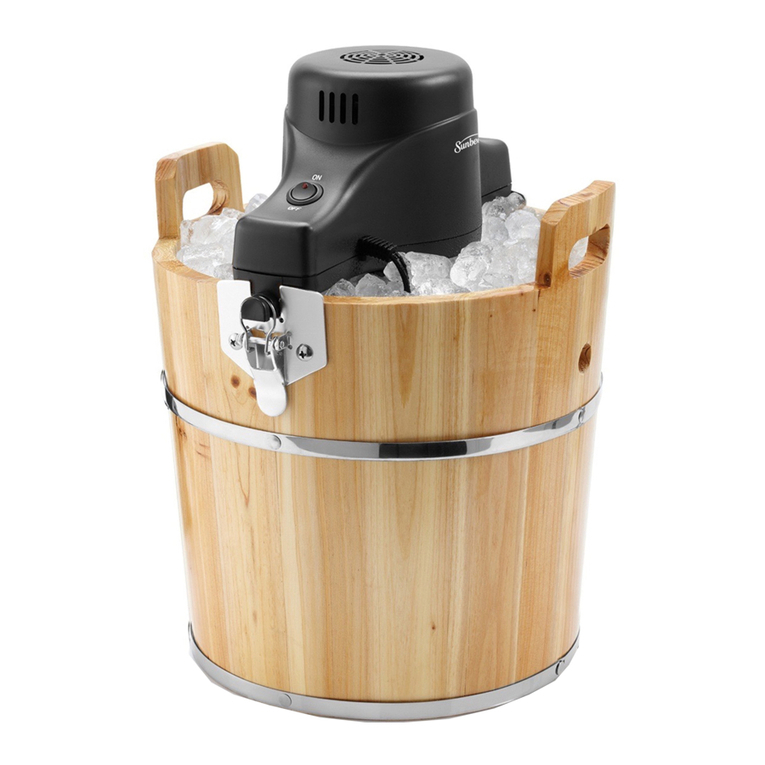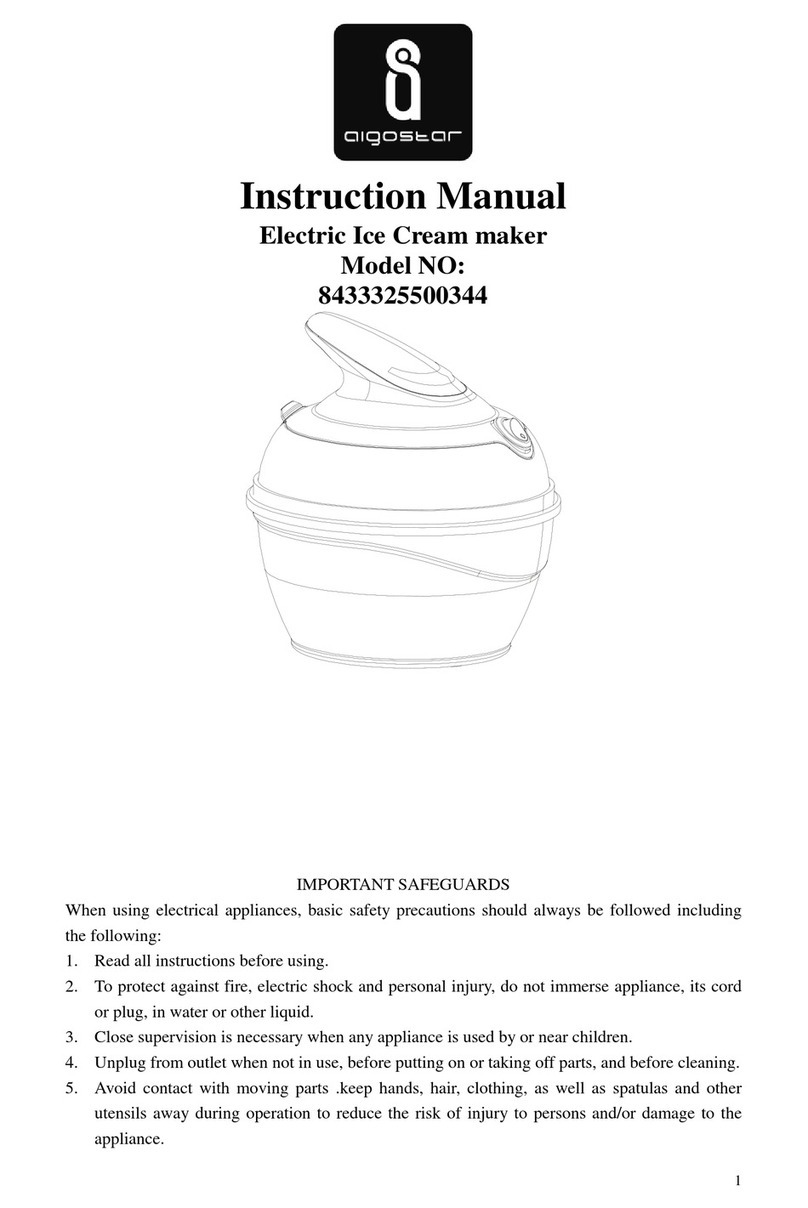
8
Note: If these clearances are not maintained, the
production capacity will be reduced, cycling will be
increased and the potential will exist that the machine will
stop completely
3) It is necessary to clean the air condenser each month
to remove dust, paper, etc., which may obstruct
airflow. Prior to cleaning the condenser from the
inside,disconnectthemachinespowersupply.
4) The machine should be connected to a fused
disconnect no more than six feet away. Electrical
installation MUST comply with state and / local
electricalcodes.
5) Never position the machine in direct sunlight or near
a heat source. This will reduce its performance and
possibledamagethe freezer.
6) Water connections (Water Cooled Only)are made at
the rear of the machine. A minimum of ½ inch (ID)
water supply and drain lines are recommended. Both
the water inlet and outlet lines must remain
unobstructedor themachineperformance willbe
affected.
C) Electrical Requirements
All wiring installed to operate the freezer must be in
accordance with the National Electric Code and / or
localelectricalcodes andregulations.
!! IMPORTANT !!
Thismachinemustbeproperlygrounded.Failure
toproperly groundthefreezer mayresultin
dangerous and / or fatal electric shock.
The main machine power supply must meet
requirements at all times of operation. Voltage
fluctuations must not exceed plus or minus 5% of the
ratednameplatevoltage.
AllColdelitemachinesareequippedwith stepdown
transformers for the control circuit supply. These
transformers have a “multi-tap” input which must be
wired to match the inlet voltage
(ie. 115 vac). Failure to wire to the correct supply
voltagecan result inmachine malfunction.
Electrical Connection – ( Refer to Fig. 3 )
Having removed the side panels from the frame, the
main power connection box is located on the rear, right
side bottom of the frame. The connection box is
labeled“Connect PowerLine Here”.Connectthe
power supply wires to the machines using the
appropriate electrical hardware and strain relief
devices.
Figure3
Afterthe electricalconnectionsare completed,turnthe
power supply on. At this time you must check the
beater / auger motor rotation. The correct beater
rotation ( Facing the front of the machine ) should be
counterclockwise.
D) Completing the Installation
1) All of the setup and calibration of this freezer
should be performed by an approved Coldelite Service
Technician. Failure to calibrate this freezer properly
can result in freezer damage and a voided warranty.
2) After installation and calibration of both electrical
and refrigeration circuits, the side panels should be
reinstalled.
!! IMPORTANT !!
Failuretoclosely followfactorysetupandmaintenance
procedureswill result in a voided warranty. Coldelite
Corporation will not be responsible for any freezer
which is not setup or maintained in accordance with
factoryprocedures.
NOTE: Always turn the machine OFF and
disconnect the power supply switch to the freezer
prior to exposing any electrical connections or
moving parts.
On the following pages you will find important
informationand procedureswhichdescribe theproper
sanitizing, operation, and maintenance of your
Coldelite Freezer. We are certain that your full
compliancewithinstructionsandprocedureswill
result in many years of trouble free operation.
In the event this unit should malfunction or need
maintenance,pleasecontactyourlocalColdelite
Distributoror Authorized ServiceAgent.

